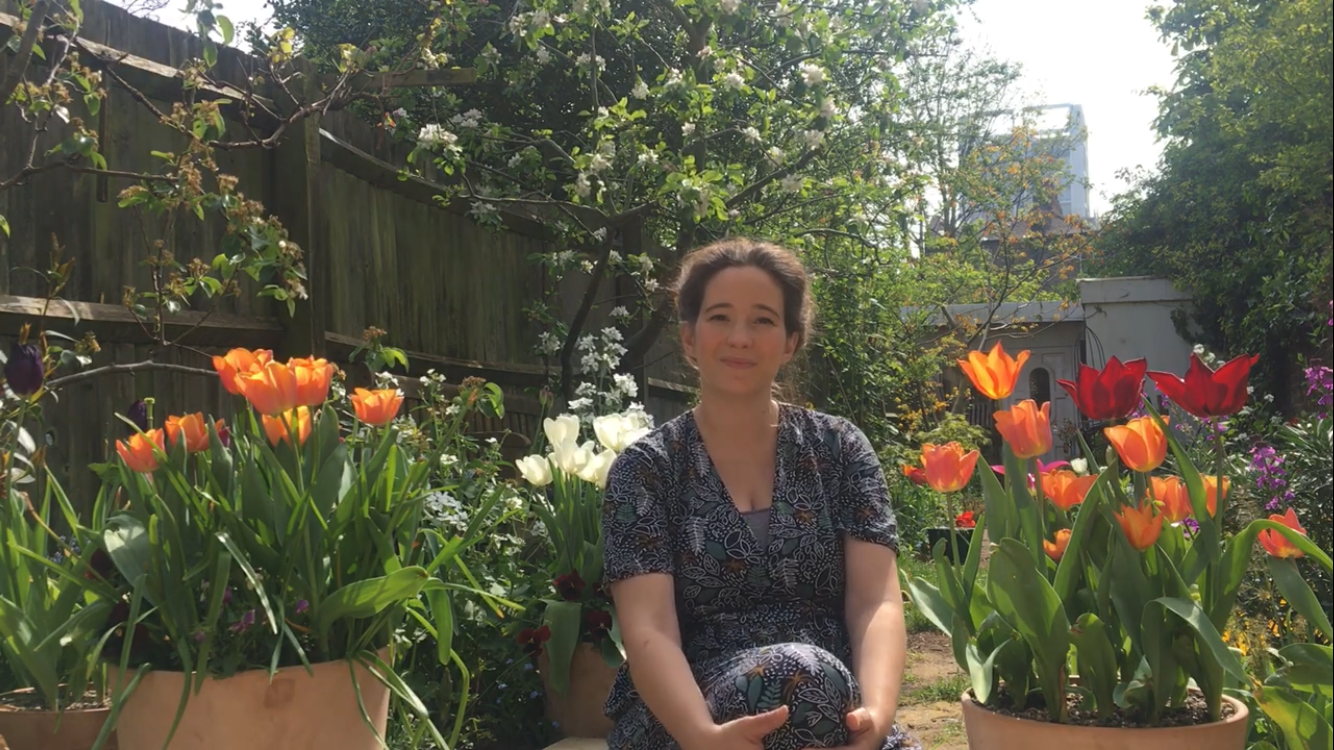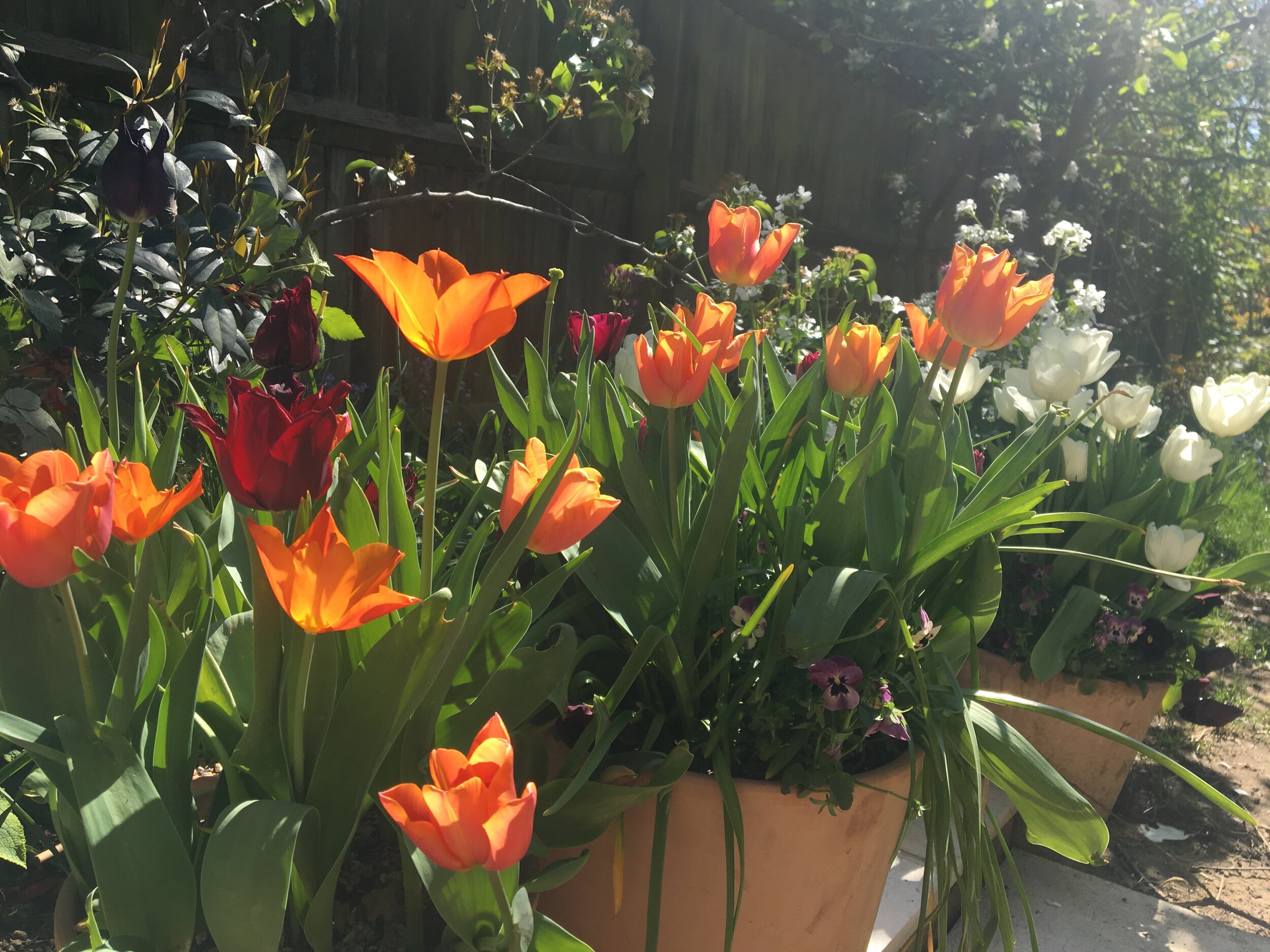Lessons I have learnt from my bulbs this year
This weekend, as I turned out my shaggy looking pots of faded tulips and rapidly withering daffodils ready to replant for a summer display, it seemed a good moment to reflect on how brilliant they were just a few weeks ago, and on what I would like to do better next year. I have no doubt that asked in early April, many a gardener would say that the arrival of spring bulbs is their favourite time of year. They are a frothy and transient moment in the garden and, amidst the voluptuousness of mid-summer, their brief explosion of glory is easily forgotten, but they play a vital role in the gardener’s psychological year, or they do in mine at least. They are the strongest bridge we have in crossing the dark expanse of the winter months when nothing is growing.
Ordering bulbs in late Summer is the first moment I take to connect with the year ahead. Whilst everything is beginning to wither and decay around me, in my mind’s eye I am already outdoors in the April to come, surrounded by tulips and alliums. Bulbs arrive in their boxes just as the days are darkening and in November (or, if I’m completely honest, late December) I find that, in planting them their colours are brought to me so vividly that my winter blues are cast off for a few days at least. Then by February you begin to see the bright flowers of crocus and Iris reticulata and that’s it, winter has been successfully navigated and the new year in the garden has begun. It is the first daffodils that coax me out of the kitchen door while tulips provide the flaming backdrop to my ardent efforts in April.
Iris reticulata, one of the first signs of spring
Given this essential role, I always feel some pressure to ‘get it right’ with the bulbs that I plant. After a long winter of expectation, the disappointment is particularly bitter when things don’t go to plan. With this in mind, I thought it might be a good idea to take stock on the lessons I have learnt from my bulbs this year.
1. Pot size does matter
I am a massive fan of having lots of tiny pots. In fact, I am a massive fan of having lots of pots in all sorts of sizes positioned everywhere so you can barely make it to the compost heap. But this year I realised that what size pot you put things in has a massive impact on the final effect. This year I had a few large pots packed with tulips which looked brilliant but I realised that tulips look their best in massive pots. The few middle-sized pots I filled with them just looked a bit weedy and detracted from the show, so for next year I think I’ll focus on the main event in a few huge pots and keep things simple. On the other hand I will definitely continue to plant my Iris reticulata and dwarf Narcissi in medium to small pots because their fragile elegance is best appreciated in small numbers, like specimen plants, rather than ‘en masse’.
Beautiful N.canaliculatus
2. I love dwarf narcissi
Dwarf narcissi have stolen my heart over the last couple of years. They are perfectly proportioned for containers, delicate and often early flowering. Most of us first come across this dainty class of flower in the form of the rightly famous ‘Tete-a-Tete’, so often the top layer of a good bulb lasagne, a ray of bright sunshine early in the year and ubiquitous in garden centres in the autumn. But there is a wide range of dwarf narcissi available, many with much subtler colours and form and just as easy to grow. This year I grew N.canaliculatus which I loved and last year I had N.minnow. This winter I plan to expand my repertoire much further!
Tulips out all at once
3. It’s really worth the effort to stagger blooms
I left my planting pretty late last year (see below) and so ended up doing most of it in one go over a few days. I really noticed the difference this spring as the show was much shorter lived than usual. Planting in layers within a pot (bulb lasagne) will mean the pot works harder and blooms longer, but there are other ways of prolonging the season. The first is to stagger planting of each type of flower, ie to plant some narcissi and some iris one week and then some more of each two weeks later. The second is to use sun and shade as spring progresses to speed and slow the rate at which blooms appear. When all my pots look like they are going to bloom at the same time I find you can buy a week or so of delay by moving a few into a slightly shadier corner and others into full sun and this is definitely worth it. Staggering display in this way applies particularly to the small, early flowers. Blousy tulips look quite good all at once in a big explosion, but specimen flowers in small pots are best appreciated close up and only a few at a time.
4. Under-planting tulip pots
For a long time I topped my tulip pots with grit, which I thought was the ‘official’ way to do it. It looks great but I have realised that grit works best topping small pots of alpine style bulbs. In a little garden like ours it’s a waste of space to have huge great pots of seemingly bare grit sitting around for months over winter and early spring. Wall-flowers are the other classic choice for under-planting tulips, but given that they flower at the same time they still present the same problem of a relatively uninspiring sight until April. This year I topped my tulip pots with violas which bloomed all winter looking brilliant before the tulips wove their way happily in-between them. It worked brilliantly and when the tulips obscured the violas I picked the flowers and crystallised them. I will definitely be doing this again and hopefully will come up with some more ideas before autumn. Arthur Parkinson’s brilliant use of red Kale and cardoons has inspired me to think outside the box.
Violas and pansies underplanting tulips
5. Plant early bulbs in good time
I am a chaotic gardener and for the last few years have fitted gardening tasks around a lot of international travel, pregnancy, a toddler – the excuses are endless. I often leave tasks till the last minute and certainly tulips can be left really late (I planted mine just before New Year) and will still do well. But my Iris reticulata were a complete no show this year and I realise it’s probably because I left them too late given how early they flower. I was heartbroken and next year I will be better prepared.
6. I need a break from planting bulbs in the borders
Admittedly this time I was pregnant but I just need a year off from the backbreaking work of individually planting bulbs in the borders. Above all Dutch Iris which are the biggest sodding labour of love I have ever encountered. I have planted hundreds each year only to find that about 6 come back the next. No more! Next year new bulbs will either stay on my patio in pots or else I’ll try sinking pots of them into the borders or putting a trench of them around my veg beds, but no way am I going through the ordeal of dot planting them again!
As with all resolutions, no doubt I will still find myself frantically planting tulips on New Year’s day, but for now I can picture myself, cup of tea in hand, enjoying a rich display of perfectly timed fireworks from February through till May.






